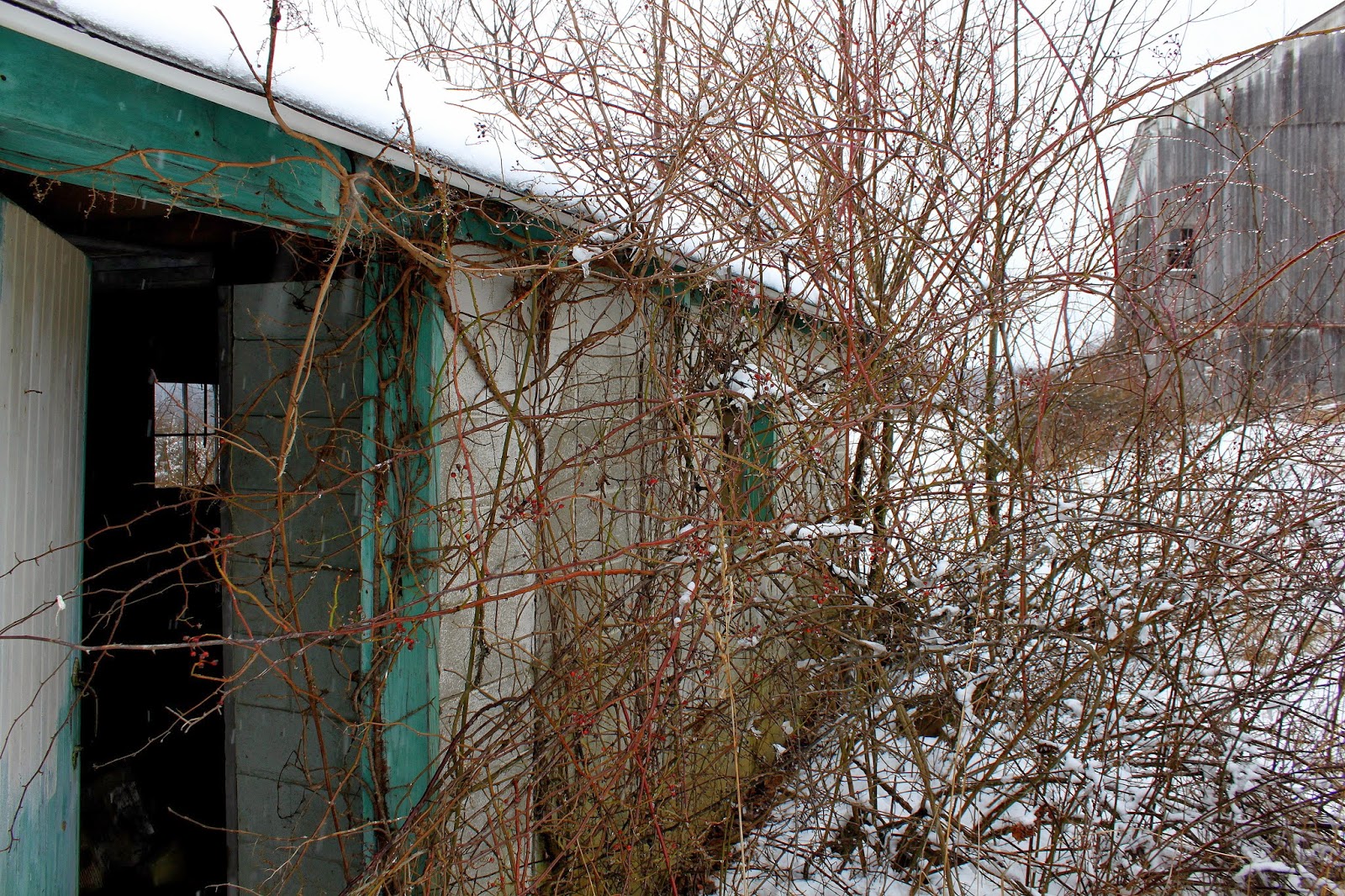My favorite thing to photograph is abandoned places. I have never been too excited at photographing people. Give me a building or an old factory to wander through and I could spend hours taking pictures. The prospect of going through a place that has had a busy and long history fascinates me especially when you have to research it. Our county has so many working farms around that they sometimes seem common place. Over the course of time though many farms have been let go and are just not profitable to operate as they once were. The backbone of any farm is a good barn. Barns serve such a wide variety of services to the farmer. Storage, shelter, and a home to the many animals cared for on these family farms. No matter the season barns are always photogenic. They seem to tell a story of the families that built them and the people that worked them. These photos were taken last winter during a late spring storm. So if I can bore you with hopefully the last winter shots for this year I would like to share with you an old abandoned family barn.
This particular barn is one that was built on an older foundation. The original burned down and this one was constructed around 1930. It sits out on 170 and used to be part of the Huston farm. It has since changed hands and is privately owned now. Ed Huston was the last one to operate the farm and sold it off in the late 50's. Throughout its history this barn has been used to house dairy and beef cattle plus for a number of years hogs. It even sheltered a piper cub airplane in the bottom in the early forties until Ed's son was drafted and the plane was donated to the war effort. All of the framing timber was cut on site with the wood harvested from the farm. It was then rough sawed with a portable saw mill on site. The timber that runs across ends of the barn are forty two foot long and are all one single piece. There is one at each end. One of the trees that large was cut from the farm but the other tree came from Elkton and was drug here and milled.You will notice in the photos the detail in which the framing was put together. All of the main timbers were joined by dowel pins and notched. The roof framing was notched together as well. The outside sheeting of pine came from out west and was delivered to East Palestine by rail car. Roaming through this old structure looking at the weathered wood and stalls was sort of like reading a book. It told the stories of its life and the lives of the people that worked it.





















No comments:
Post a Comment